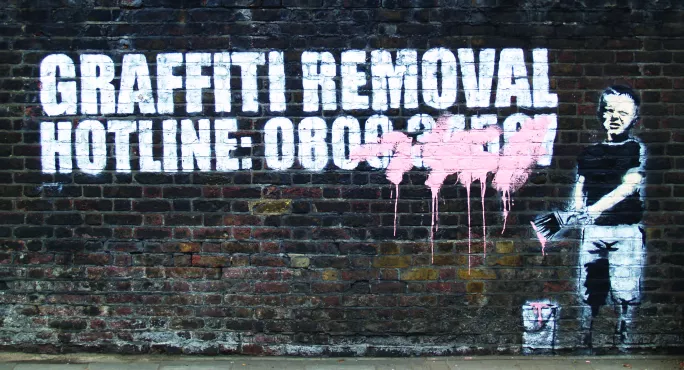As a seasoned veteran of the classroom, I often pause for thought while drilling my modern foreign languages class in such phrases as “Oui, j’ai un cochon d’Inde”. One such thought, which has been perplexing me since about 1993, is why, oh why do we teach amid a plethora of graffiti willies?
They come in all shapes and sizes, with or without embellishments, and are created using an array of implements, from pencils to compasses.
I became so annoyed by the presence of graffiti willies in my classroom that last year I set about eradicating them. I removed them from dictionaries, displays, walls, desks, the ceiling, the floor - no rogue willy was safe.
I was proud of my efforts. Year 7 were no longer horrified and bleating in panic if a willy winked at them from the pages of a textbook. My classroom was now a “willy-free zone”.
Imagine my horror when, within weeks, they had all returned. I confess, I gave up. I waved the white flag, utterly despondent. “Let them draw willies,” I said. “Clearly, you can’t keep a good willy down.”
But as time passed, I began to reflect: perhaps I was going about it all wrong. Perhaps I needed to understand my adversary. I decided to research and establish the reasoning behind this most curious of classroom defacements.
I’m sure the blame lies with Ancient Rome; more specifically, the Greek fertility god Priapus, whom the Romans popularised in their art. Evidence of this well-endowed patron of merchant sailing can be found all over Pompeii in the form of very graphic images (he was considered effective at warding off evil).
Since the Romans were jolly good at conquering, tales and images of Priapus must have spread and taken root, hence our national fondness for comic willies of challenging proportions.
Did my research inspire me to try to destroy the willy graffiti again or did it make me accept it as a part of school life?
Some schools have attempted to reduce graffiti and tagging by installing a wall specifically for daubing. In one local school, the art of graffiti is on the curriculum: students are given the task of designing stencils.
There are less creative options. One headteacher confided in me that he was prepared to install CCTV by all toilets to deter budding artists. Although this is a popular method of policing across the pond, I am not certain about its ethics. Graffiti artist Banksy himself painted an image depicting the phrase “One nation under CCTV” - situated below a CCTV camera.
So how would I implement a graffiti-free school policy? It can be achieved only with whole-school participation. This can begin with open discussion in personal, social and health education lessons about art versus vandalism, as well as by engaging students to participate in whole-school policy.
Schools should be transparent and publish how much they spend each year on the effects of vandalism with the aim of getting parents and students to take collective responsibility.
Will it stop the willies? Not entirely, but it will ensure that the consequences of scrawling them on every surface are fully -understood - and it will reduce their number markedly.
For persistent offenders, you can only hope that they grow out of it. Or if they don’t, that they at least monetise the habit - I know a few Shoreditch galleries that would shift a few choice canvases in seconds.
Caroline Ross is a teacher at a secondary school in the South of England.
This is an edited version of a feature from the 12 June issue of TES. You can read it on your tablet or phone, or by downloading the TES Reader app for Android or iOS. Or pick it up at all good newsagents.




